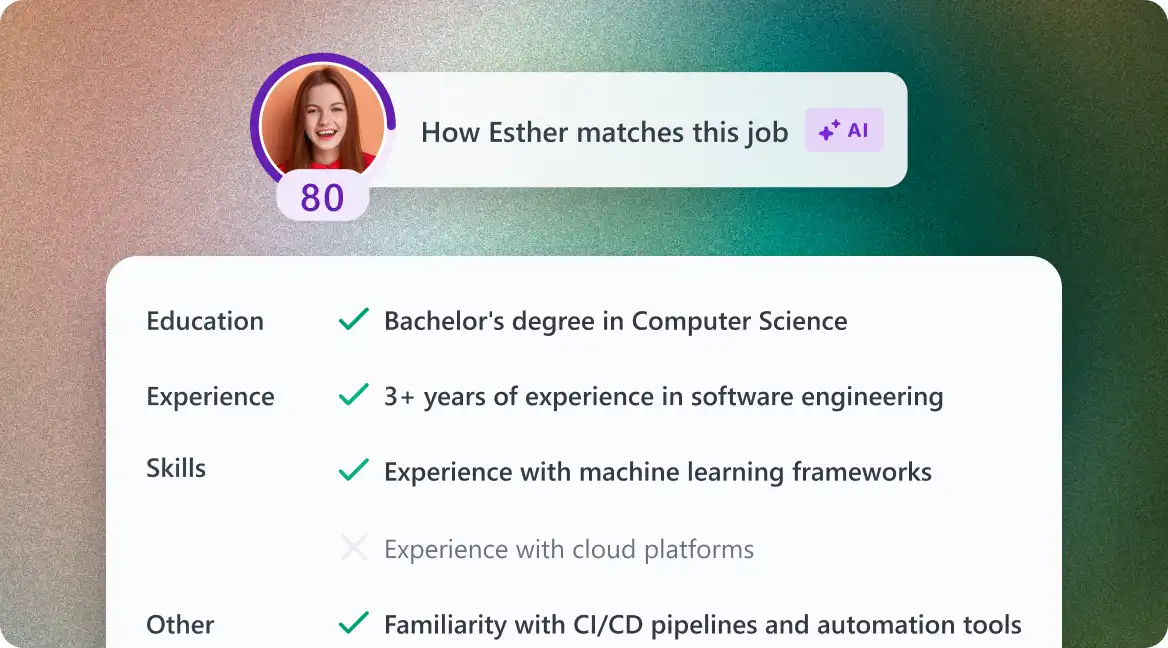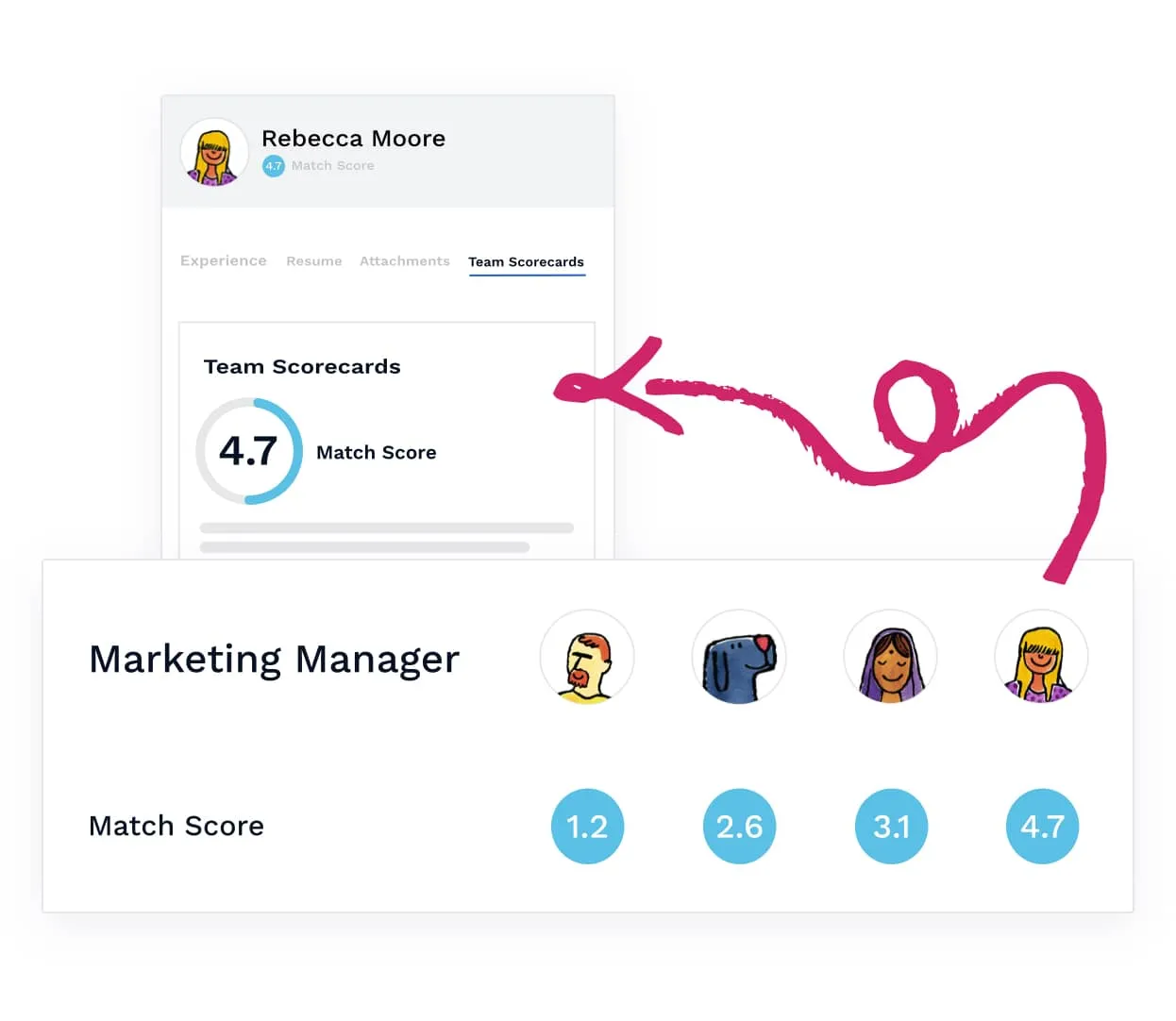How recruiters actually screen resumes
Learn how recruiters screen resumes in seconds. This article explains the full resume screening process and shares insider tips to pass the first review.
Posted on June 20, 2025
Last updated: July 3rd, 2025 | 5 min read
ATS are a Recruiter's best friend (or worst nightmare, for those of us forced to use workday).
Companies and job boards want to make your application as frictionless as possible (I know... Sometimes it doesn't feel that way).
Just like your favorite LLM, they're hungry for data.
So they would rather gather more applications upfront and sort them out afterwards.
This means that they receive an overwhelming number of resumes for each job.
That is between 100 and 300 per position on average.
Not all of these are good (You wouldn't believe how many Hotel Receptionists apply for SWE roles), but they have to be dealt with.
Enters today's main guest: the Applicant Tracking System (ATS).
It's basically a central database for all job applications.
It stores your resume and your personal information while tracking you through the hiring
process.
Time for some stats !
98% of Fortune 500 companies use an ATS in their hiring workflow. source: gohire.io
Beyond the Fortune 500, 66% of large companies and 35% of small organizations use ATS. source: gohire.io
75% of recruiters overall use ATS. source: gohire.io
The short story is that you can't avoid them. (It's like your social anxiety, you have to learn how to live with it 😱)
Modern ATS do many things (job posting automation, recruiting channel analytics, tracking interview feedback,...), but when it comes to your job application, they have 3 main functions:
Application tracking: monitoring candidates’ status, so nothing falls through the cracks.
Automatic Filtering: automatically screening and organizing candidates. (Yes, this is where your resume gets automatically rejected).
Searching: It lets Recruiters quickly filter and identify top candidates from a large pool.
The content and format of your resume has an impact at each of these stages.
So today, let's pop the hood of the average ATS, and see how the machine works.
“Know thy enemy and know yourself; in a hundred battles, you will never be defeated.” Sun Tzu
When you submit your resume online, the first thing the ATS does is parse your resume.
It reads the text and breaks it down into structured data (like recognizing your name, contact info, work history, education, skills, etc.).
Modern ATS now use Natural Language Processing (NLP) to interpret resumes.
They look for common section headers (“Experience”, “Education”, “Skills”) and patterns to
categorize the information accordingly.
During parsing, formatting is stripped away (nope, the robot doesn’t care about your choice of colors 🤖).
For example, if you submitted a PDF, the ATS will extract all text from it.
If you used a Word document, it might convert it to plain text behind the scenes.
(Read my article on which file format to use for more details on the best format for resumes).
This is why ATS-friendly formatting is crucial: fancy layouts can confuse the parser.
If the parsing fails, the ATS might store broken or blank data for those fields (best scenario), or even place you in a bin folder/reject you (worse).

Your candidate profile in VIVA HR (Nice hat ! 🎩 ) Source: VIVA HR
Once parsed, your resume data is stored in the ATS’ database.
At this stage, the ATS has turned your CV into a searchable profile. (It’s just like LinkedIN, but without the cheesy inspirational quotes).
Recruiters can search the ATS database by keywords or filters to find candidates.
The ATS indexes all the keywords from your resume so that searches are efficient.
For instance, if a recruiter later searches “Python AWS Seattle” in the system, any resume mentioning those terms should show up.
Recruiters can also filter by fields: years of experience, education level, past companies.
Questions in the application form also impact filtering (for example, “Do you have a B.S. in Computer Science?”, “Are you eligible to work in X country?”).
These act as automatic filters – wrong answers can reject or flag an application immediately.
Only those who pass these first checks move into the candidate pool.

The "chosen ones" in Workday Source: Workday
It doesn't end here: ATS also match resumes to job requirements by keywords.
This means that when opening a new job in their system, a selection of profiles can be automatically made.
Again, this uses your candidate profile's fields.
The best ATS are able to identify similar keywords, but as a rule, matching the job description’s wording is safest to ensure the ATS doesn’t miss your profile.

Workable uses AI to match your profile with job descriptionsSource: Workable
Many ATS also score or rank resumes based on fit. (Back to school !)
The algo will evaluate how well your resume matches the job posting and assign a relevancy score or percentage.

Breezy HR uses a metric called "Match Score" to evaluate your profile. Source: Breezy HR
If your resume score isn’t high enough, recruiters might never find your resume.
This is why having a detailed resume matters ! (and why your 1 page resume gets you rejected).
This should give you a good understanding of what actually happens behind the curtains.
You applied to hundreds of jobs: no result.
Companies won’t bother
giving you
feedback,
so you’re stuck in a loop. This will keep happening until you know what’s wrong.
Let’s break this cycle today.
Learn why you’re getting rejected with a Free resume review. You get a simulated recruiter screen and a clear list of action items.